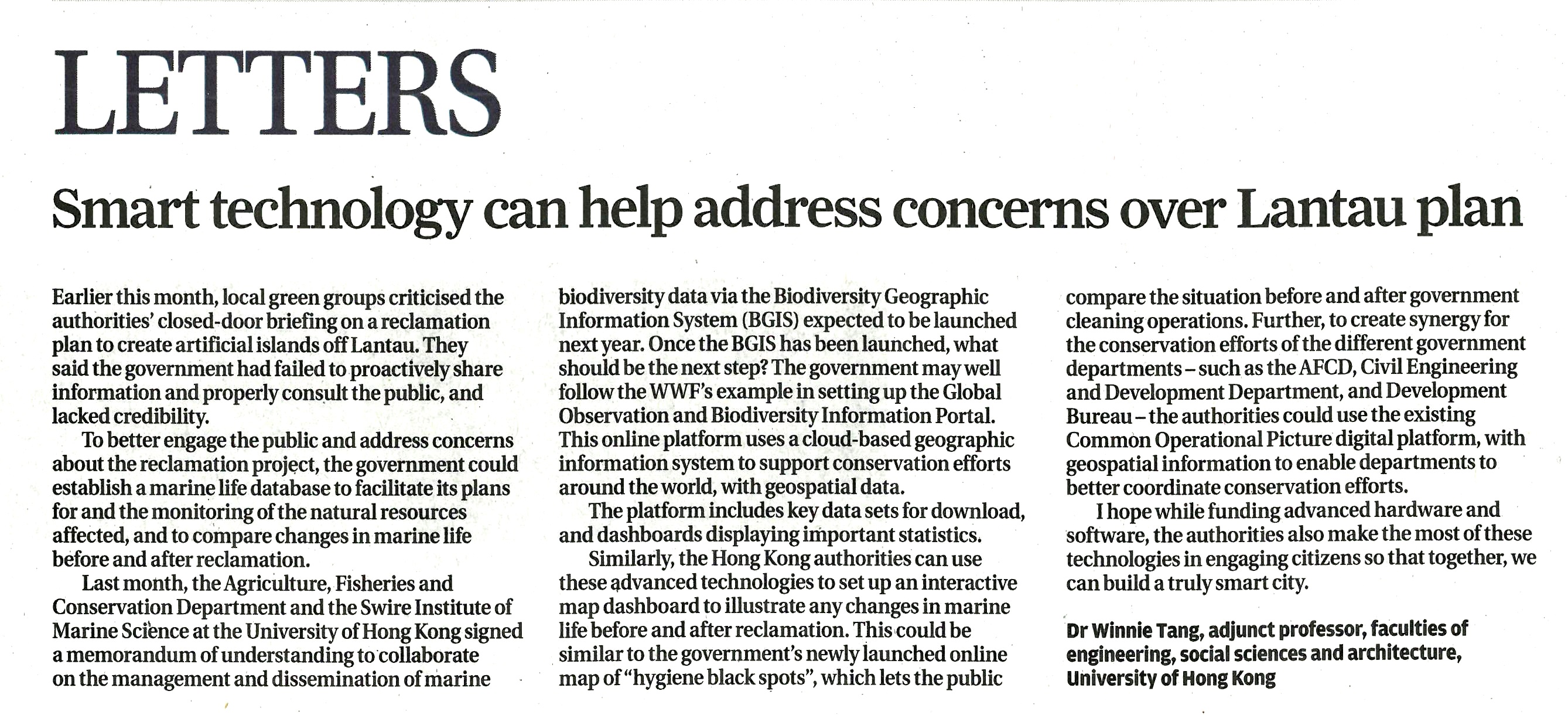網上版請按此

Smart technology can help address concerns over Lantau plan
Earlier this month, local green groups criticised the authorities' closed-door briefing on a reclamation plan to create artificial islands off Lantau. They said the government had failed to proactively share information and properly consult the public, and lacked credibility.
To better engage the public and address concerns about the reclamation project, the government could establish a marine life database to facilitate its plans for and the monitoring of the natural resources affected, and to compare changes in marine life before and after reclamation.
Last month, the Agriculture, Fisheries and Conservation Department and the Swire Institute of Marine Science at the University of Hong Kong signed a memorandum of understanding to collaborate on the management and dissemination of marine biodiversity data via the Biodiversity Geographic Information System (BGIS) expected to be launched next year. Once the BGIS has been launched, what should be the next step? The government may well follow the WWF's example in setting up the Global Observation and Biodiversity Information Portal. This online platform uses a cloud-based geographic information system to support conservation efforts around the world, with geospatial data.
The platform includes key data sets for download, and dashboards displaying important statistics.
Similarly, the Hong Kong authorities can use these advanced technologies to set up an interactive map dashboard to illustrate any changes in marine life before and after reclamation. This could be similar to the government's newly launched online map of "hygiene black spots", which lets the public compare the situation before and after government cleaning operations. Further, to create synergy for the conservation efforts of the different government departments – such as the AFCD, Civil Engineering and Development Department, and Development Bureau – the authorities could use the existing Common Operational Picture digital platform, with geospatial information to enable departments to better coordinate conservation efforts.
I hope while funding advanced hardware and software, the authorities also make the most of these technologies in engaging citizens so that together, we can build a truly smart city.
Dr. Winnie Tang
Adjunct Professor, Department of Computer Science, Faculty of Engineering; Department of Geography, Faculty of Social Sciences; and Faculty of Architecture, The University of Hong Kong